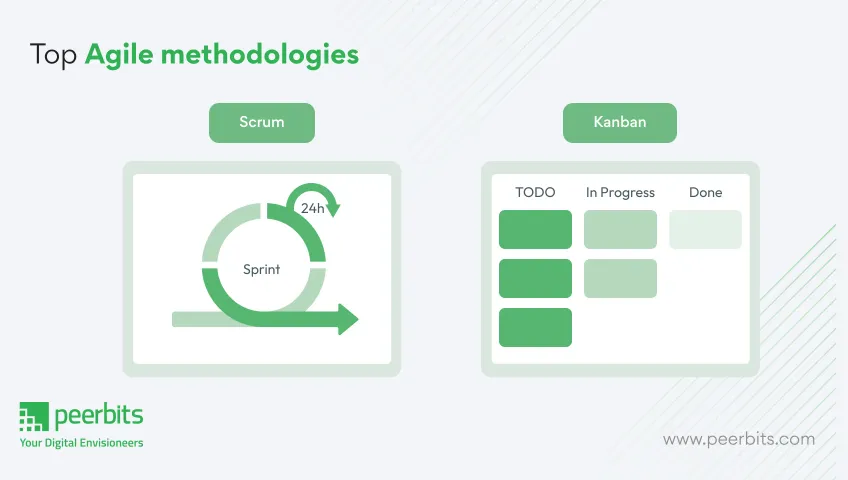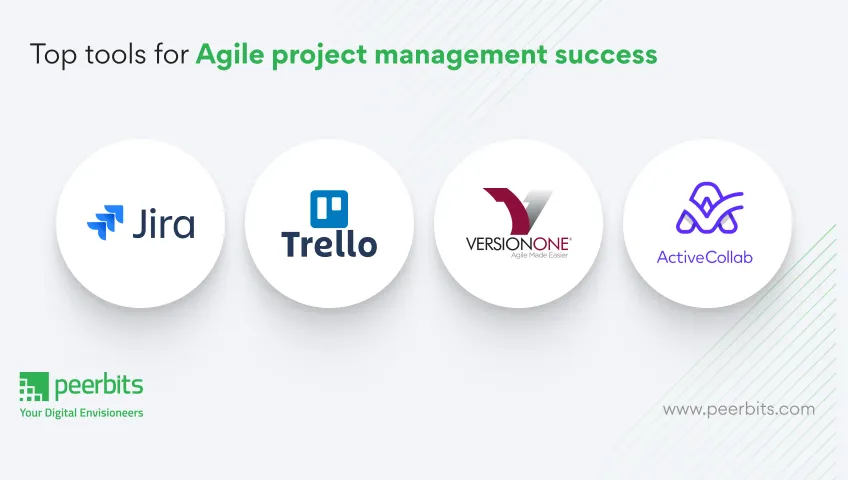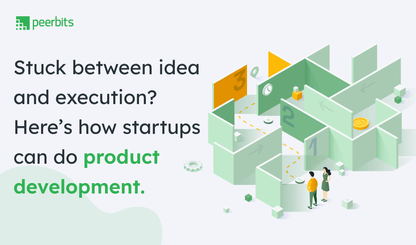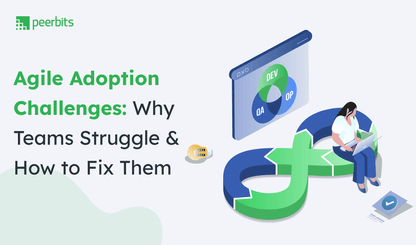Agile software development methods have gained immense popularity in modern software development. Their flexibility and ability to adapt to changing requirements make them highly effective in fast-paced project environments.
As customer demands grow, innovation speeds up, and AI transforms the tech world, nowadays Agile stands out as the top choice for successful businesses.
Surely, success in any software development project is not just a result of one single change. It is a combination of the right team, the right tools, and a relentless focus on delivering value.
With Agile methods, ticking all such boxes of seamless workflow becomes super easy.
Based on 17th state of the Agile report, almost three in five Agile practitioners are satisfied because of a better alignment with business needs.
But can Agile affect my company? Or what companies are the best fit for agile methods?
Do I even need to adopt an Agile approach if my current legacy systems are running smoothly?
Curious why Agile is key to your business success? Let’s begin with a quick look at what Agile methodology really means and uncover things further.
What is Agile Software Development Methodology?
Agile is a methodology used in software development that prioritizes flexibility, collaboration, and customer feedback. Unlike traditional methods, which often follow a linear and rigid structure, Agile operates in iterative software development cycles, known as sprints.
These cycles let teams develop software in manageable chunks and help with faster releases and the ability to adjust to changing requirements.
Core principles of Agile Methodology
At its core, Agile process focuses on delivering functional software quickly and continuously improving it based on real-time feedback from stakeholders. Though here are the six core principles of Agile approach that make it stand out:
- Deliver early. Deliver often
Agile prioritizes rapid delivery of functional software in small, incremental releases, ensuring value reaches users faster.
- Continuous improvement
Agile teams regularly reflect and adapt their processes based on real-time stakeholder feedback and sprint retrospectives.
- Stakeholder alignment
Continuous collaboration with customers and stakeholders keeps development aligned with real user needs, so no outdated specs.
- Adapt to change
Agile thrives in uncertainty. Requirements can evolve mid-project without derailing progress, making it ideal for fast-moving markets.
- Prioritize value
Every sprint aims to deliver tangible value, making sure that features developed contribute directly to business goals.
- Empowered teams
Agile relies on tight-knit teams with autonomy and shared accountability for delivering high-quality, user-centered solutions. Let’s understand what makes Agile methodology so effective at driving success.

How Agile software development methodology work?
Agile ensures that each feature is successfully developed, tested, and refined to meet user expectations by focusing on iterative development. These cycles last between one to four weeks, during which teams focus on delivering specific features or improvements.
Simply, instead of delivering a full product after months of development, Agile teams deliver working increments regularly, allowing for feedback, adaptation, and continuous improvement.
Here’s an easy flowchart for the Agile software development process:
| Step | Phase Name | What Happens | Who’s Involved |
|---|---|---|---|
| 1 | Software Backlog Creation | A prioritized list of features, enhancements, and bug fixes created based on customer/business needs | Software Owner, Stakeholders |
| 2 | Sprint Planning | Team selects items from backlog to complete in the next sprint (iteration) | Software/Product Owner, Scrum Master, Dev Team |
| 3 | Sprint Execution | Team develops, tests, and delivers working softwareincrements | Development Team, QA |
| 4 | Daily Standups | Short daily meetings to sync up, unblock issues, and stay aligned | Entire Team |
| 5 | Sprint Review | Demo of completed work to stakeholders for feedback | Dev Team, Software Owner, Stakeholders |
| 6 | Sprint Retrospective | Team reflects on what went well, what didn’t, and how to improve | Scrum Master, Dev Team |
| 7 | Backlog Refinement | Ongoing grooming of the backlog based on feedback and changing priorities | Software/ Product Owner, Team |
Even with a well-defined Agile software development process, businesses adopt different types of Agile methods to suit the unique needs of their development projects. Let’s dive in them.
Popular Agile methodology types to know

Several Agile methodologies have emerged over time, each offering a unique way to manage and deliver software projects. While they all follow the core principles of Agile, they vary in structure and specific practices. Here are two of the most popular Agile methodologies offered by software development services:
1. Scrum
Scrum is one of the most widely adopted Agile methodologies. It organizes work into sprints, typically lasting two to four weeks, with clear goals and deliverables.
Scrum teams are structured into specific roles:
- Product Owner: Defines the project requirements,
- Scrum Master: Ensures the team follows Scrum practices,
- Development Team: Builds the product.
Best fit for: Product development teams and startups needing structure, fast feedback, and iterative delivery.
2. Kanban
Kanban is another Agile software development methodology that focuses on visualizing and managing workflow. The main goal of Kanban is to improve the flow of work by limiting the number of tasks in progress at any given time, allowing teams to identify issues and optimize productivity.
Kanban teams operate with flexible roles, focusing on workflow efficiency:
-
Service Request Manager (optional): Acts as a liaison with stakeholders and manages incoming work.
-
Team Members: Handle tasks collaboratively, pulling work from the board based on capacity and priority.
-
Flow Manager (optional): Ensures smooth workflow, removes bottlenecks, and facilitates continuous improvement.
Best fit for: Teams with unpredictable workloads or businesses needing continuous delivery (e.g., support teams, DevOps).
3. Extreme Programming (XP)
XP emphasizes technical excellence through practices like test-driven development (TDD), pair programming, and continuous integration. Work is done in short iterations, with frequent releases and customer involvement.
Extreme programming team roles typically include:
-
Customer: Provides detailed requirements.
-
Programmers: Collaboratively develop code in pairs.
-
Coach: Guides the team on XP practices.
Best fit for: Startups or tech-driven businesses where product quality and adaptability are of prime importance.
4. Lean software development
Lean adapts principles from Lean manufacturing, focusing on reducing waste, maximizing value, and continuous learning. It encourages team autonomy and just-in-time decision-making.
Its team roles are flexible but aligned with Lean principles:
-
Customer-centric teams: Focused on delivering maximum value.
-
Lean leaders: Power innovation and remove systemic obstacles.
Best fit for: Enterprises aiming to improve efficiency, reduce costs, and innovate faster.
5. Crystal methodology
Crystal promotes flexibility and adapts to team size, project criticality, and communication style. It values people, interactions, and the uniqueness of each project over rigid processes.
Crystal method roles vary based on project needs, typically including:
-
Lead designer: Guides technical direction.
-
Programmers & testers: Collaborate closely with stakeholders.
-
Users/Clients: Provide continuous feedback.
Best fit for: Small to mid-sized teams working on low-to-medium criticality projects needing adaptability.
Read more: How to choose the right software development methodology?
When to adopt Agile: Is it right for your team?
Adopting Agile methodologies can significantly improve your software development process, but it's important to determine if it's the right fit for your team and project. Here are some key factors to consider:
1. Project complexity and flexibility
Agile is most beneficial for projects where requirements are likely to change or evolve throughout the development cycle.
If your project involves a high level of uncertainty or requires constant adjustments based on customer feedback, Agile can help manage these changes efficiently.
2. Team collaboration and communication
Agile thrives in environments where open communication and teamwork are emphasized. If your team is able to collaborate regularly, share feedback, and work in a cross-functional manner, Agile methodologies will likely suit your workflow.
Agile values direct, frequent communication among team members, clients, and stakeholders, so a culture of collaboration is essential.
3. Frequent delivery and feedback
If your project needs to deliver functional software in short timeframes, Agile is a great choice. Agile emphasizes continuous delivery of software increments, allowing stakeholders to see progress early and provide feedback, which helps shape the project’s direction.
Teams that can manage this iterative process and maintain a focus on delivering small, functional pieces of software will benefit from Agile's approach.
4. Resource availability
Adopting Agile requires committed resources, that involves dedicated development team for hire, product owner, and often a Scrum Master. If your team has the bandwidth to meet the demands of Agile practices, such as regular meetings and iterative planning, it may be a good fit.
If these factors queues up with your team’s capabilities and project needs, adopting Agile can improve development speed, quality, and customer satisfaction. If not, you may need to assess whether a different methodology might work better for your team’s workflow.
Maximizing Agile's potential: Best practices
To get the most out of Agile methodologies, it's important to follow best practices that help optimize the process and ensure your team is working efficiently.
Here are some key practices that can help your team maximize Agile’s potential:
1. Clear and prioritized backlog
A well-organized and prioritized product backlog is crucial for a successful Agile process. The backlog should clearly list all features, tasks, and requirements in order of importance.
This allows the team to focus on high-priority tasks first and helps ensure that each sprint delivers the most valuable outcomes for stakeholders.
2. Frequent and effective communication
Regular communication is at the heart of Agile. Hold daily stand-up meetings to discuss progress, challenges, and next steps. These short, focused meetings help keep everyone aligned and ensure issues are addressed before they become roadblocks.
Open communication within the team and with stakeholders also ensures that expectations are clear and feedback is integrated promptly.
3. Continuous testing and integration
Agile promotes continuous testing and integration throughout the development process. By integrating code regularly and testing it early, you can identify bugs and issues before they become bigger problems. This leads to higher-quality software and fewer surprises during the final stages of development.
4. Encourage team collaboration and ownership
In Agile, the entire team shares responsibility for the project’s success. Encourage a culture where everyone—developers, testers, product owners, and designers—collaborates and takes ownership of the outcome.
This sense of shared responsibility encourages creativity and commitment, leading to better solutions and a more efficient development process.
5. Adapt and improve continuously
Agile is built on the idea of continuous improvement. After each sprint, conduct a retrospective meeting to evaluate what worked well and what could be improved.
Use these insights to adapt your processes and workflows, making your team more efficient with each iteration.
you can help your team make the most of Agile, ensuring faster delivery, better quality, and a more collaborative, responsive development process by adopting these best practices.
Agile practices drive project success, but the right tools for agile project management can streamline the process even further. Let’s see what tools your business can benefit from.
Best Agile Project Management Tools
To successfully manage Agile projects, teams rely on various tools designed to simplify the process, improve communication, and ensure smooth project tracking.

These tools help with tasks such as sprint planning, task management, and progress tracking. Some of the popular agile project management tools commonly used are :
1. Jira
Jira, by Atlassian, is a popular Agile project management tool for creating user stories, planning sprints, and tracking tasks. It offers burndown charts, velocity tracking, and reporting to monitor progress and spot bottlenecks. Seamless integration with Confluence and Bitbucket supports documentation and code management.
2. Trello
Trello provides a visual, board-based approach to manage Agile projects with lists and cards. Drag-and-drop functionality lets teams move tasks easily through project stages. Ideal for smaller teams needing a flexible, straightforward tool.
3. VersionOne
VersionOne is an enterprise-grade Agile tool supporting Scrum, Kanban, and Lean methodologies. It manages backlogs, tracks progress, and generates insights into team performance. Integrates with multiple development tools for complex, cross-department projects.
4. Active Collab
Active Collab is an all-in-one project management tool for Agile teams. It enables sprint planning, task tracking, real-time collaboration, and document sharing. Features like time tracking, invoicing, and customizable workflows help teams stay on track.
Conclusion
Agile methodologies have transformed the way software development teams operate, emphasizing flexibility, collaboration, and continuous improvement.
Adopting Agile, teams can respond more effectively to changing requirements, deliver high-quality software faster, and align more closely with customer needs.
The key to success lies in understanding the core principles, selecting the right Agile methodology, and maintaining a strong focus on communication and collaboration throughout the development process.
As Agile practices continue to evolve, adopting the right tools and following best practices can help maximize its potential. Whether you’re working with Scrum, Kanban, or another Agile framework, the goal remains the same: to create software that meets user needs, nurtures teamwork, and adapts to change efficiently.

FAQs
No, Agile approach adjusts structure through frequent, focused planning and feedback loops.
Not at all. Agile has fixed sprint timelines and clear deliverables. It is just more adaptable than rigid schedules.
Agile allows faster releases, customer feedback integration, and better control over development costs that majorly boost startup growth.
The founder in Agile sprints provide vision, clarify priorities, and give timely feedback without micromanaging.
Yes, if software development teams skip ceremonies, ignore feedback, or lack stakeholder involvement then they can fail in their project completion.
In Agile method’s of the type - Scrum involves 3 Roles, 5 Events, 3 Artifacts structures as the core elements that make this framework work beneficial for many startup businesses.








